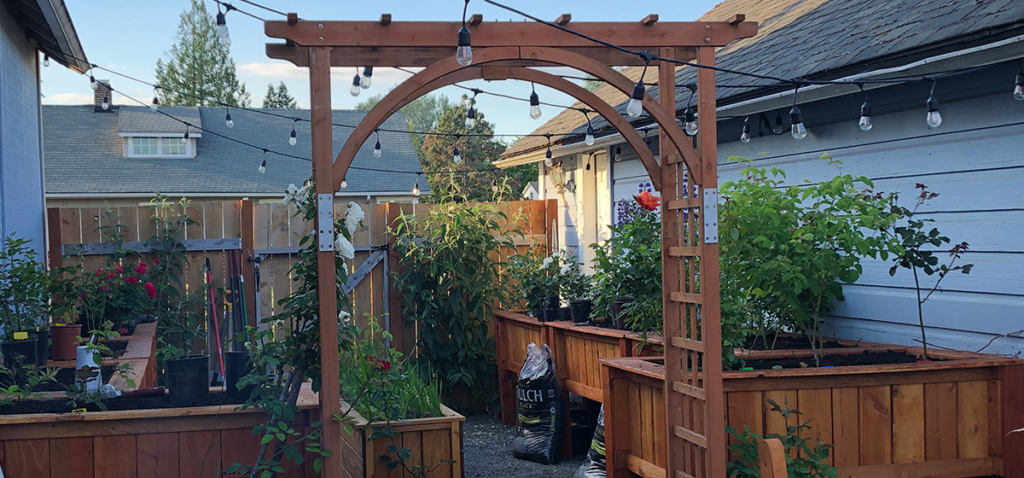
In our rose garden of >120 rose plants, we opted to try a variety of methods for growing roses. We tried planting them in soil covered with rock, we tried planting them in plastic containers, we tried planting them in large plastic containers, we tried planting them in soil covered with bark dust, and lastly we tried planting our roses in raised wooden planters. Our favorite method, by far, is the raised wooden planters. The beauty of the wood will leave your guests in awe. Couple that beauty, with beautiful roses and a spicy, lingering scent in the air and you will have a backyard that will leave others in envy.
Here is what we found are the benefits to having raised planters:
- Less water – We found that mulch on top of the soil allowed the water to trickle down slowly and hit the plant roots more effectively. We used less nutrients and water because of this.
- Fast Growth – because the roses are not competing with nearby weeds, grasses, fences, and/or trees for light we found that growth was fast and more manageable.
- Less Disease – where we live, our soil is made of a heavy clay. In the winter and spring the ground becomes waterlogged and does not remove water effectively. This caused stress in many of our roses and led to heavy amounts of disease. The raised planter boxes had a different type of soil and allowed for fast drainage even in monsoon season (Pacific Northwest inside joke). We noticed increased vigor in our plants and very minimal disease through full season of growth.
- Less back-aches – messing with your roses is hard work. Working on your knees or hunched over to prune can be back-breaking work when you manage more than several plants. We found that the raised planter boxes help alleviate that back-pain when maintenance days coincided with those 25 plants.
With all the good there is always a downside. Here is what we found are the detriments to having raised planters:
- Time & Money – We build all of our planter boxes so that they would adorn the side of our house like a necklace on your neck. That said, that took time in planning and building. These were not cheap. In total cost of materials they were >$200 each and that was in having the tools to make these accurately.
- Replacement Cost – as with any wood product, these will eventually have to be replace. In my view, having these is worth their weight in gold because it completely transformed our backyard.
- Squirrels – Oh goodness, the squirrely LOVE digging up the mulch in these things. So much more than our bark or plastic container roses. I absolutely hate it because we have to constantly clean up the mess these little critters makes. On the bright side though, they drive me nuts.
- Back-ache – although in the long-run these will save you back ache from having to bend over, the initial investment in back pain will leave you with a memory you will not soon forget. In order to have working planter boxes you will lift half a yard of wet soil 4-ft off over the top lip.
All in all, we have found that we love these planters and will definitely be making more in the future to accommodate a larger yard space. We hope you will keep these in mind when thinking of adding roses to your yard.